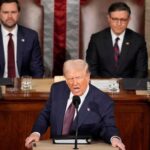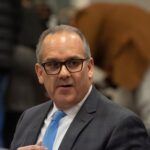Escalating GOP Efforts to Reduce Federal Support for NPR and PBS Amid Budget Discussions
In the midst of tightening budget constraints and ongoing fiscal negotiations, Republican legislators have ramped up initiatives aimed at significantly cutting federal allocations to National Public Radio (NPR) and the Public Broadcasting Service (PBS). Proponents of these reductions argue that public media entities should increasingly depend on private contributions and corporate sponsorships instead of taxpayer dollars, aligning with the broader GOP objective to shrink government expenditure on public broadcasting. Among the proposals is the elimination of funding through the Corporation for Public Broadcasting, a key source historically underpinning NPR and PBS operations.
Nonetheless, this push faces resistance from a coalition of moderate Republicans and Democrats who caution that slashing funds could jeopardize the educational and cultural services these outlets provide. Critics highlight the risk of diminished local journalism and restricted access to impartial news, especially in rural and marginalized areas. Primary concerns include:
- Decline in community-focused news coverage, reducing public awareness.
- Cutbacks in educational programming for children and underserved groups.
- Heightened dependence on corporate sponsors, potentially compromising editorial independence.
| Funding Source | Approximate Percentage | Effect of Reductions |
|---|---|---|
| Federal Grants | 15% | Significant – threatens core programming |
| Private Donations | 45% | Moderate – funding can fluctuate |
| Corporate Sponsorships | 25% | Low – potential influence on content |
| Other Revenue | 15% | Variable – includes fundraising events |
Potential Risks to Educational and Cultural Content from Funding Cuts
Opponents of the funding reductions emphasize that NPR and PBS serve as vital institutions for educational and cultural enrichment nationwide. Educators and cultural advocates warn that slashing budgets could lead to the discontinuation of essential programs that promote literacy, historical knowledge, and the arts—especially in communities where alternative resources are scarce. From early childhood learning shows to in-depth cultural documentaries, these platforms play a crucial role in fostering lifelong education and cultural appreciation.
- Educational Content: Programming and digital resources designed for K-12 students, offering free, high-quality learning materials.
- Cultural Programming: Documentaries, music, and arts coverage that celebrate diversity and preserve heritage.
- Community Engagement: Local stations develop tailored content addressing specific regional interests and needs.
Historical data reveals a strong link between federal funding and the breadth of educational outreach. The table below highlights key program categories alongside their estimated annual audience, illustrating the potential scope of impact:
| Program Category | Annual Audience (Millions) | Main Beneficiaries |
|---|---|---|
| Children’s Educational Shows | 35 | Students, Families |
| Historical Documentaries | 18 | General Public, Academics |
| Arts and Music Programs | 22 | Artists, Cultural Enthusiasts |
Debate Over the Effectiveness of Budget Cuts in Achieving Fiscal Responsibility
While Republican lawmakers advocate for deep cuts to NPR and PBS funding as part of broader budget tightening, many analysts and policymakers question whether these actions meaningfully contribute to fiscal discipline. Critics argue that targeting public broadcasting addresses only a minuscule fraction of the federal budget, leaving major expenditure areas such as defense and entitlement programs largely untouched. This has led to concerns that the cuts are more symbolic gestures aimed at political messaging than substantive fiscal reforms.
- Minimal Budgetary Impact: NPR and PBS combined account for less than 0.1% of the federal budget, so cuts here offer limited financial relief.
- Negative Cultural and Educational Effects: Reductions risk eroding trusted sources of educational content and comprehensive journalism, particularly in underserved regions.
- Political Symbolism: The measures may primarily serve to energize political bases rather than address core spending challenges.
| Spending Category | Annual Expenditure (Billions) | Potential Savings from Cuts |
|---|---|---|
| Public Broadcasting (NPR & PBS) | $0.5 | Up to 100% |
| Defense | $700 | Minimal Proposed Cuts |
| Medicare & Medicaid | $1,500 | Requires Significant Reductions |
Advocating for a Balanced Strategy to Sustain Public Media’s Mission
Recent expert recommendations call for a nuanced approach that preserves the vital public service role of NPR and PBS while addressing concerns about federal funding. Supporters emphasize that these organizations deliver indispensable educational content, local journalism, and cultural programming often neglected by commercial media. Instead of drastic budget cuts, reforms focusing on transparency, accountability, and innovation are encouraged to strengthen public media’s future.
- Expanding public-private partnerships to diversify revenue streams.
- Enhancing oversight to protect editorial independence and public trust.
- Investing in digital technologies to reach broader and younger audiences.
| Proposed Reform | Anticipated Benefit |
|---|---|
| Diversification of Funding | Less dependence on federal funds |
| Improved Governance Transparency | Increased public confidence |
| Digital Platform Expansion | Greater audience engagement and reach |
Conclusion: The Future of Public Broadcasting Funding Hangs in the Balance
As the contentious debate over NPR and PBS funding unfolds, advocates remain committed to defending the critical role these outlets play in delivering educational and impartial content. Conversely, Republican lawmakers pressing for budget cuts argue that fiscal responsibility necessitates reevaluating government spending priorities. With both sides firmly entrenched, the trajectory of public media funding is uncertain, foreshadowing a challenging legislative battle ahead.










